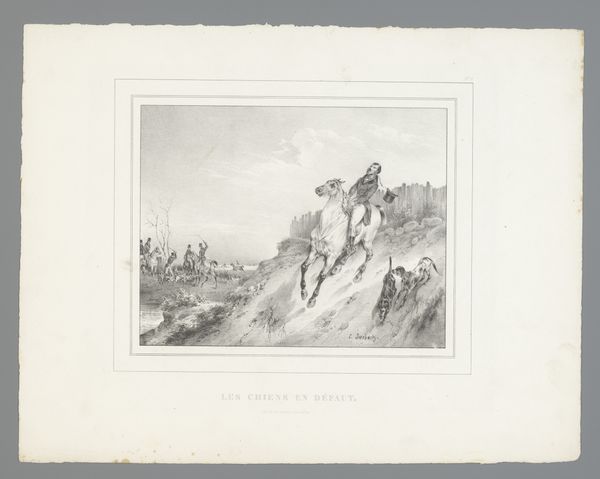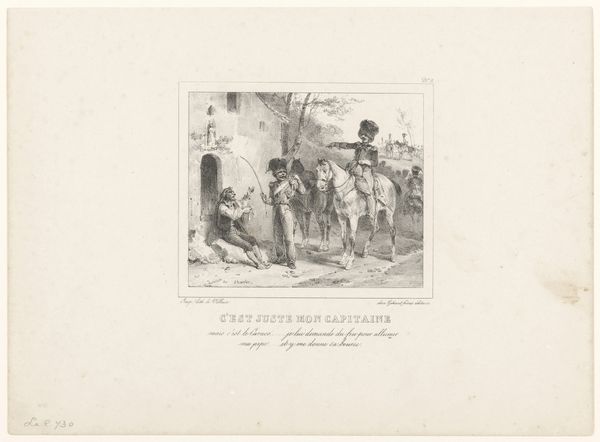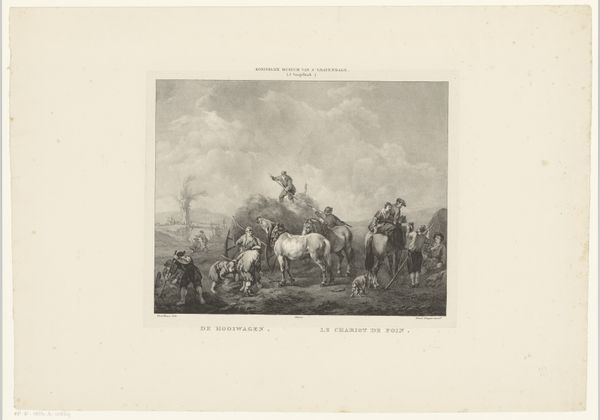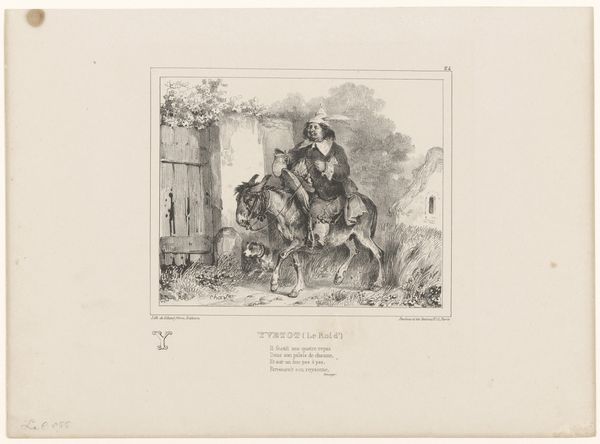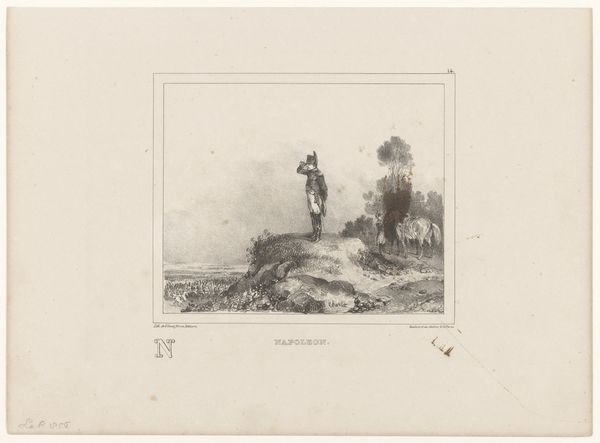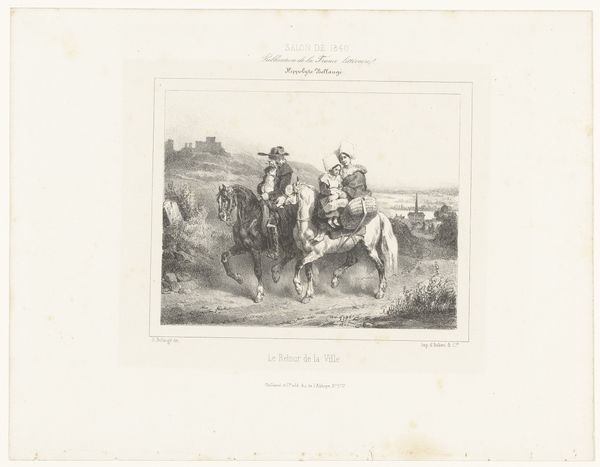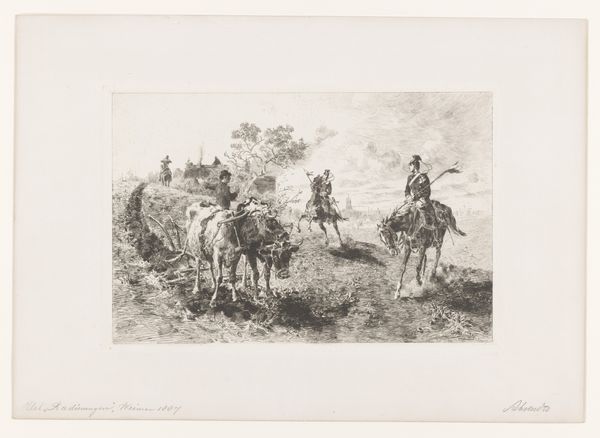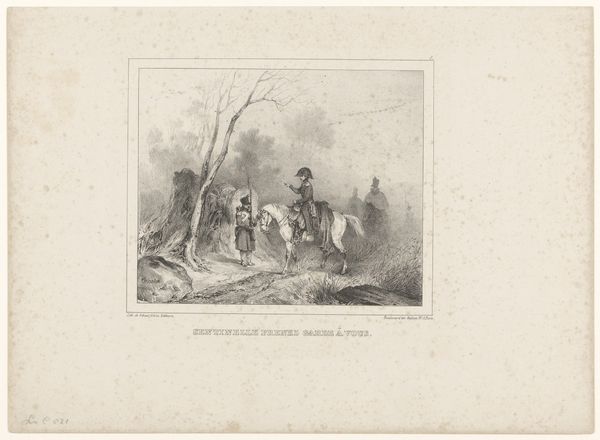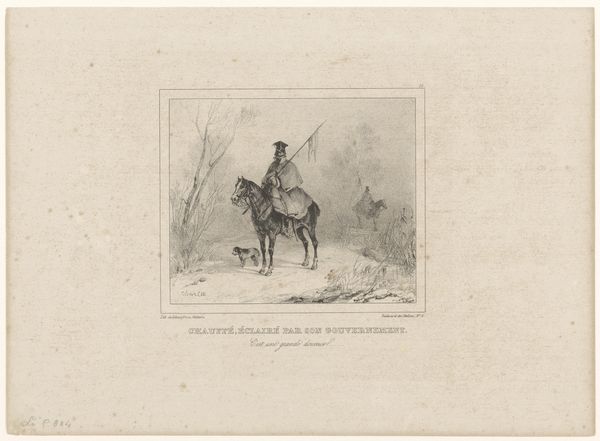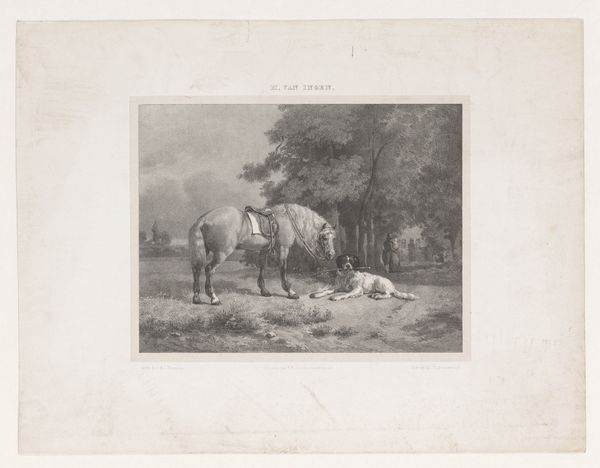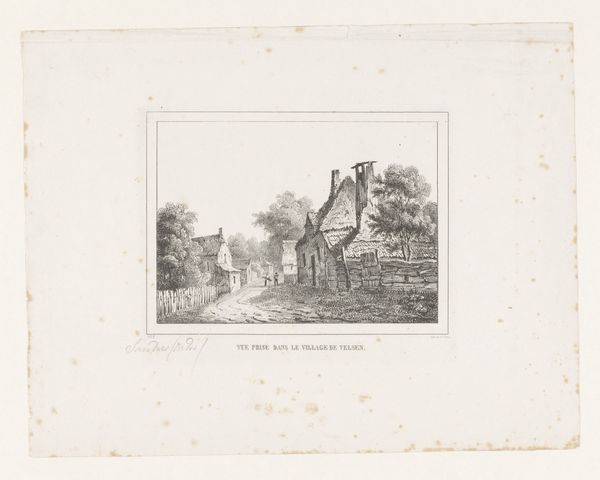
print, engraving
#
portrait
# print
#
old engraving style
#
landscape
#
figuration
#
romanticism
#
engraving
Dimensions: height 247 mm, width 338 mm
Copyright: Rijks Museum: Open Domain
This print, "Kalmuk," was made by Nicolas Toussaint Charlet, likely in the early 19th century, using a technique called lithography. Lithography is a printmaking process that relies on the contrast between oily and water-based substances. The artist draws on a stone or metal plate with a greasy crayon, then applies water. The water adheres to the bare stone, while the greasy areas repel it. Ink, which is also oily, is then rolled over the surface, sticking only to the drawn areas. Finally, paper is pressed against the plate to transfer the image. Notice how this process allows for a wide range of tonal variation, almost like a drawing. Charlet masterfully uses this to create a sense of depth and atmosphere in the scene. Lithography emerged as a relatively quick and inexpensive method for producing images, which democratized visual culture. It allowed for the wider dissemination of imagery, and as a result, had a significant impact on journalism, advertising, and the circulation of artistic ideas. So, next time you see a print, consider the material and the process. They offer valuable clues about its historical and cultural context, and the artist's intentions.
Comments
No comments
Be the first to comment and join the conversation on the ultimate creative platform.
